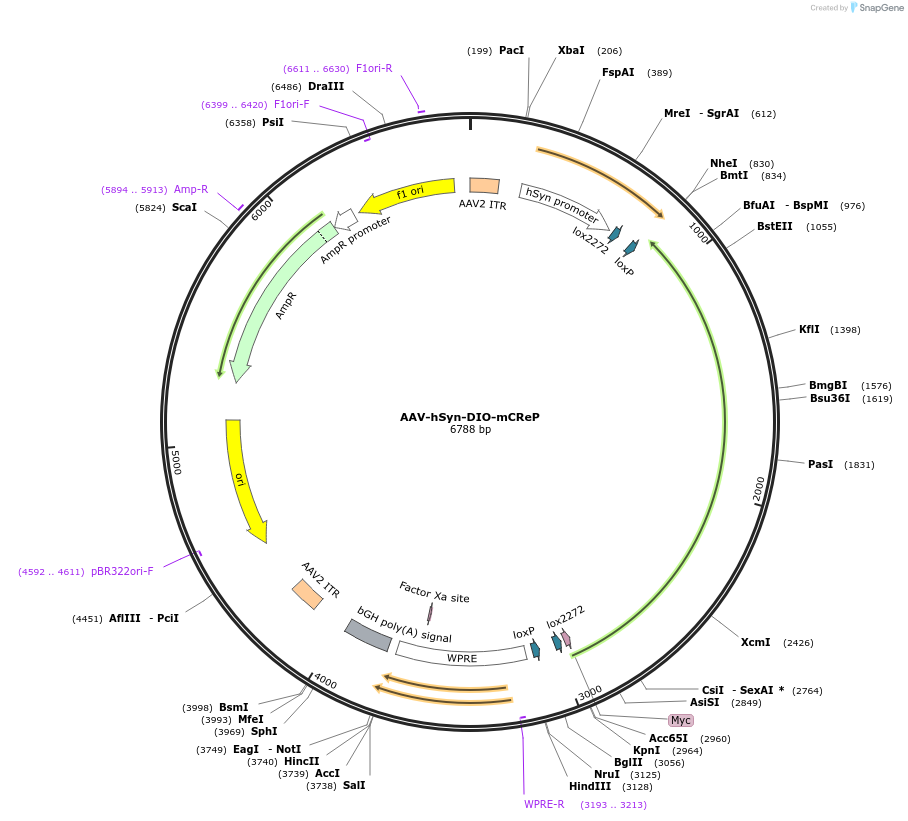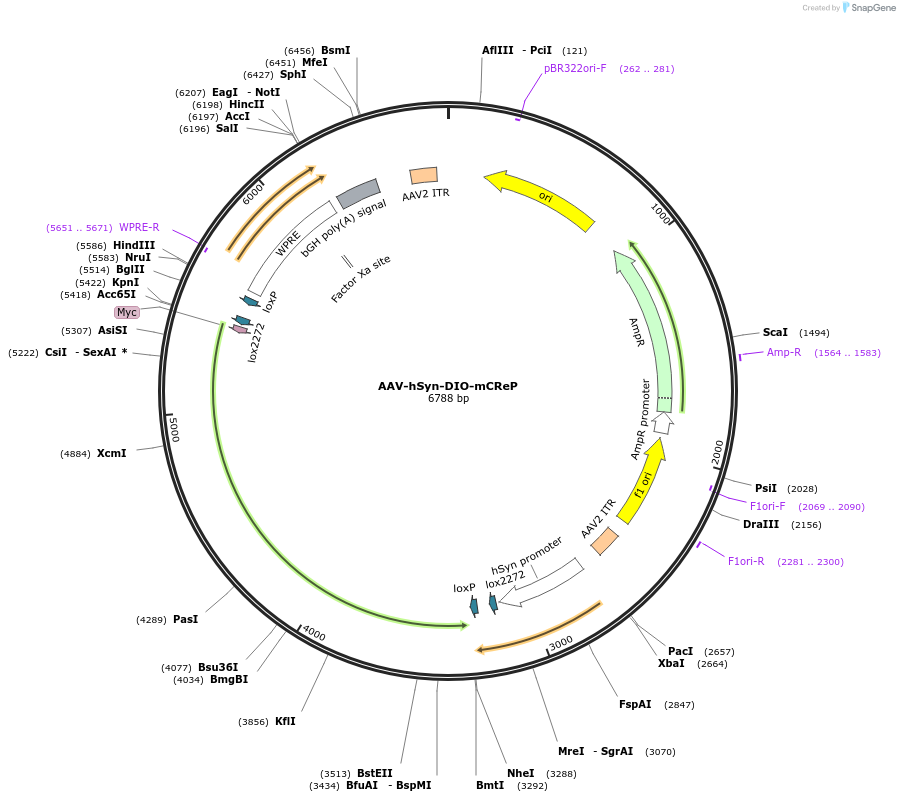AAV-hSyn-DIO-mCReP
(Plasmid
#167503)
-
PurposeConditional expression of the eIF2alpha phophatase, CReP (Ppp1r15b)
-
Depositing Lab
-
Sequence Information
Ordering
| Item | Catalog # | Description | Quantity | Price (USD) | |
|---|---|---|---|---|---|
| Plasmid | 167503 | Standard format: Plasmid sent in bacteria as agar stab | 1 | $89 | |
Want a viral vector made from this plasmid?
Make a packaging request and we'll get back to you.
Please log in to submit a packaging request.
-
SerotypeSelect serotype for details See details about
-
PricingSelect serotype and quantity $ USD for preparation of µL virus + $32 USD for plasmid.
-
How this works
- Place a request for a quantity of 2 (0.2 mL), 10 (1 mL), 25 (2.5 mL), or 50 (5 mL). Our all-inclusive pricing includes DNA production and QC.
- Addgene will quickly confirm that we can produce a high-quality prep for you.
- Track your request and place an order from within your account. Payment information must be added before we can begin processing your order.
- Receive your prep in 6–9 weeks after the MTA is approved by your organization.
- Learn more about our Packaged on Request Service.
Backbone
-
Vector backboneAAV
- Backbone size w/o insert (bp) 2773
- Total vector size (bp) 6788
-
Vector typeMammalian Expression, AAV, Cre/Lox
Growth in Bacteria
-
Bacterial Resistance(s)Ampicillin, 100 μg/mL
-
Growth Temperature37°C
-
Growth Strain(s)NEB Stable
-
Copy numberLow Copy
Gene/Insert
-
Gene/Insert namePpp1r15b
-
Alt nameCReP
-
SpeciesM. musculus (mouse)
-
Insert Size (bp)2091
-
GenBank IDPpp1r15b
-
Entrez GenePpp1r15b (a.k.a. 1810033K10Rik, C530022L24Rik, CReP)
- Promoter hSyn
-
Tag
/ Fusion Protein
- Myc (N terminal on insert)
Cloning Information
- Cloning method Restriction Enzyme
- 5′ cloning site NheI (not destroyed)
- 3′ cloning site KpnI (not destroyed)
- 5′ sequencing primer TCGTGTCGTGCCTGAGAGCG
- 3′ sequencing primer CATAGCGTAAAAGGAGCAACA
- (Common Sequencing Primers)
Resource Information
-
Supplemental Documents
-
A portion of this plasmid was derived from a plasmid made byGenscript ORF clone
Terms and Licenses
-
Academic/Nonprofit Terms
-
Industry Terms
- Not Available to Industry
Trademarks:
- Zeocin® is an InvivoGen trademark.
These plasmids were created by your colleagues. Please acknowledge the Principal Investigator, cite the article in which the plasmids were described, and include Addgene in the Materials and Methods of your future publications.
-
For your Materials & Methods section:
AAV-hSyn-DIO-mCReP was a gift from Nicole Calakos (Addgene plasmid # 167503 ; http://n2t.net/addgene:167503 ; RRID:Addgene_167503) -
For your References section:
Cholinergic neurons constitutively engage the ISR for dopamine modulation and skill learning in mice. Helseth AR, Hernandez-Martinez R, Hall VL, Oliver ML, Turner BD, Caffall ZF, Rittiner JE, Shipman MK, King CS, Gradinaru V, Gerfen C, Costa-Mattioli M, Calakos N. Science. 2021 Apr 23;372(6540). pii: 372/6540/eabe1931. doi: 10.1126/science.abe1931. 10.1126/science.abe1931 PubMed 33888613









